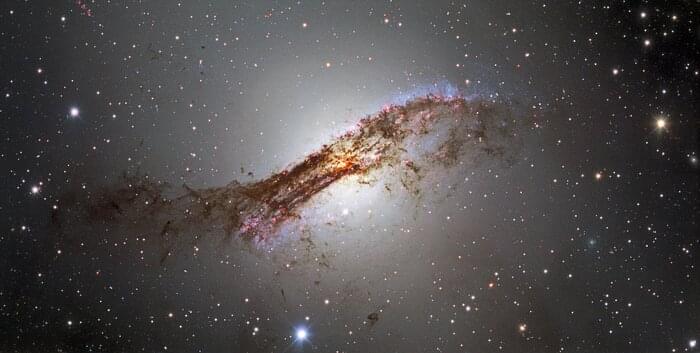A spectacular portrait of the galaxy Centaurus A has been captured by astronomers using the Dark Energy Camera mounted on the Víctor M. Blanco 4-meter Telescope at Cerro Tololo Inter-American Observatory in Chile. This galaxy’s peculiar appearance—cloaked in dark tendrils of dust—stems from a past interaction with another galaxy, and its size and proximity to Earth make it one of the best-studied giant galaxies in the night sky.
The galaxy Centaurus A, which lies over 12 million light-years away in the direction of the southern-hemisphere constellation Centaurus (The Centaur), is the leading light of this striking image. This image provides a spectacular view of the luminous glow of stars and the dark tendrils of dust that hide the bright center of the galaxy. This dust is the result of a past galactic collision, in which a giant elliptical galaxy merged with a smaller spiral galaxy. As well as large amounts of gas and dust, Centaurus A’s dust lane contains widespread star formation, as indicated by the red clouds of hydrogen and by the large number of faint blue stars visible at each end of the dust lane.
The proximity and brightness of Centaurus A—it is one of the closest giant galaxies to Earth—make it one of the best-studied objects in the southern hemisphere night sky. Since its discovery in 1,826 scientists have studied the galaxy exhaustively with many different kinds of telescopes, revealing a variety of intriguing features. Radio telescopes reveal a colossal jet of matter spewing outward from the heart of the galaxy. This jet is accelerated to almost half the speed of light by a supermassive black hole at the center of Centaurus A, and its bright emissions at radio wavelengths make this galaxy one of the most prominent radio sources in the night sky. In fact, in July 2,021 the Event Horizon Telescope produced an image of a jet launching from the black hole in Centaurus A, which weighs in at 55 million times the mass of the Sun.
